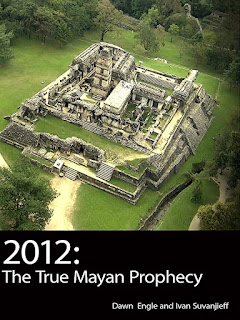Was there a Margarita behind the Margarita? Of course. But contrary to what you may have imagined, this woman was not a Mexican beauty, but instead a fledgling Hollywood starlet. And though other Margarita namesakes have surfaced and vied for the distinction, this starlet has all the trappings of the real McCoy.
Years ago I heard a eulogy aired on NPR's All Things Considered for a man named Carlos "Danny" Herrera, who passed away at ninety in San Diego. Although the name rang no bells, he left a legacy known far and wide. He had created one of the world's most iconic cocktails, the Margarita. On a wistful note in respect of the man's passing, the host unraveled a tale of how Herrera came to invent the drink that is synonymous with Mexico. It was 1992, and San Diego was paying homage to Herrera who had been born and raised in Mexico City at the turn of the century and moved to Southern California five years before he died.
According to the San Diego Union-Tribune, Herrera had worked his way across Mexico as a young man, settling just south of Tijuana in 1929. He and his wife built their house in the rugged Baja California countryside. They added a bar in their home to entertain friends.
RANCHO LA GLORIA
More and more people dropped in so they decided to open for business, and a few years later, they added a restaurant. Then came ten hotel rooms and a pool along with a booming clientele from across the border. Rosarita Beach just down the road was becoming a fashionable getaway for the Hollywood crowd and Carlos' place was an easy pit stop for a quick refreshment on the dusty Baja road.
By 1935, traffic was heavy. Carlos was a friendly guy with a quick wit and his bar-restaurant, named Rancho La Gloria after his daughter, attracted stars and socialites who stopped in regularly before continuing south to Rosarita or Ensenada.
A STARLET IS BORN
Among the bar's clientele was an actress named Marjorie King. While her friends took advantage of Carlos' talents as bartender, Ms. King did not partake in the afternoon revelry. She had an unusual problem. She was allergic, so the tale went, to all alcohol except tequila.
What luck, Carlos cajoled. Tequila is the national drink of Mexico, he said as he poured the actress a straight shot of the clear, potent liquid, brought out a plate of fresh limes, and set a salt shaker on the bar in front of her. Marjorie wrinkled her pretty nose, gave Carlos a "not so fast" look, and informed him she hated the taste of it.
What was a girl to do? In those wild and reckless days not long after Prohibition's last gasp, how could one sit idly by and not join in the fun? Herrera was determined to put an end to Ms. King's misery. He went to work.
ULTIMATE CONCOCTION
Herrera decided he would create the ultimate concoction for the attractive actress. He started experimenting and came up with a winner: three parts white tequila, two parts triple sec, one part fresh lime juice, a pinch of sugar. As the day was hot, he added shaved ice and blended the mixture with a shaker. Ms. King liked the looks of the drink immediately, Herrera reportedly said.
But how to serve it? Marjorie King was no ordinary gal, and Herrera wanted to pay tribute to her sense of style. Something special was needed. He grabbed a champagne glass, dipped its rim in lime juice, and twirled it in a bowl of salt. Re-shaking the contents, he then poured the frothy liquid into the champagne glass and presented it to the starlet. The result—the soon to be famous Margarita, shaken, not stirred. And by coincidence, the drink included all the ingredients of a traditional tequila shooter—tequila, lime and salt, but in a more appealing package.
NAME RECOGNITION
How did the cocktail become known as a Margarita? Since Marjorie and her gang of friends often came to Rancho La Gloria, whenever their car caravan pulled up outside the bar, Carlos would spot the bunch, see Marjorie, and greet her with a hearty, "Margarita! Margarita!" the Spanish equivalent of her name. Then he'd start preparing her special drink.
It was instant name recognition. What else could it be called? Margarita was the perfect name for this sexy new drink. Meanwhile Marjorie—aka Margarita—went back to the States where she hung out with all her swell friends and introduced the drink to bartenders at some of the finer dining establishments in Los Angeles and San Diego. When asked its name, she explained bartender Danny Herrera, the inventor of the cocktail, called it a Margarita.
The name stuck and by the 1950s Margaritas were being served everywhere in Southern California. Soon after that, the Margarita began to make its way around the world as Marjorie's Hollywood friends were globe trotters and took their love of the cocktail with them wherever they went. So the next time you're taking a sip of that marvelous frothy concoction known as a Margarita, think back on a time when Baja California was just a rugged strip of sandy desert and Cancun didn't even exist. Think about a little bar with big views of the Pacific Ocean and thank Carlos "Danny" Herrera for paying homage to a Hollywood beauty by inventing a delightful drink to brighten up her day. Salud!
For more information on the Maya, Mexico and the Yucatan, check out my website, www.jeaninekitchel.com. My travel memoir, Where the Sky is Born: Living in the Land of the Maya, is available on Amazon.com. Also on Amazon, are books one and two in my Mexico cartel thriller trilogy, Wheels Up—A Novel of Drugs, Cartels and Survival, and Tulum Takedown. Subscribe to my blog above for my writings on Mexico and the Maya.








































